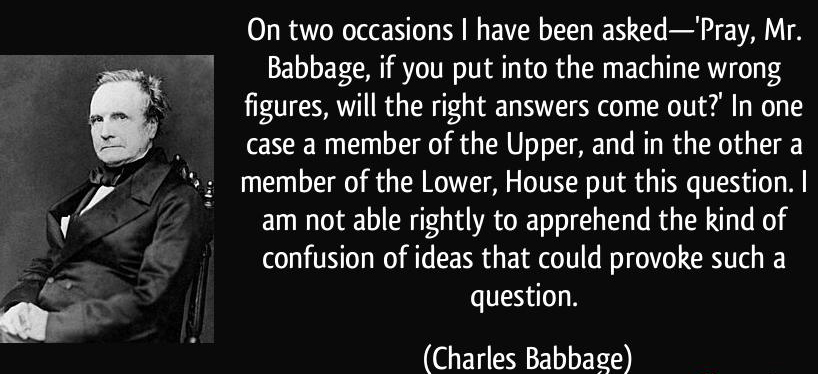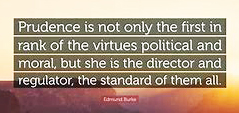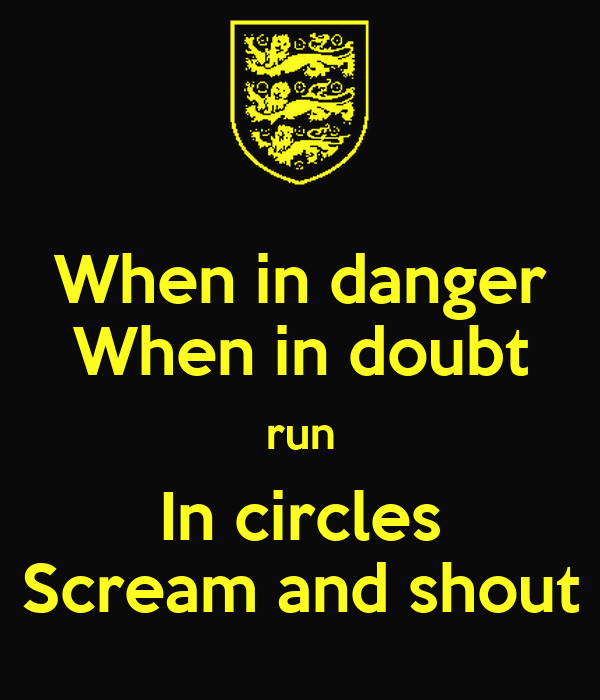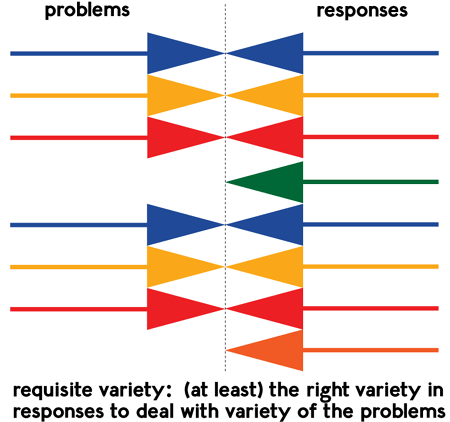Trustworthy Benchmarks
So you want a happy, secure, prosperous life? You were born with the freedom to make it happen. Are you prepared to take personal responsibility for attaining it, come what may? The compulsion requisite to bring it to fruition is up to you.
What’s that tug holding you back from the commitment? That’s the subconscious fear that if you change for the better, your social systems will push back, doubting your loyalty to the rulers. If you proceed, you will find out the fear is justified. When such happens to you, think about the implications. When you are self-confident and thriving, can you be ruled?
You are a member of a social system, a community of unequals, that has no interest in your well-being. Your social system is placed athwart your path to attain your desired way of life. It’s sore afraid your success will set an example for the others. Of course it will. When the head shed makes a punished example out of you, it antes the general fear of self-improvement.
If you’re a MitM, this psychological herd mentality crap does not hold you back. You’re already being punished to the max. If you’re not a MitM, the tradeoff is yours to evaluate. The primacy of social status is an important lesson to learn. Evidence and reason have no chance against social-status groupthink.
Facing Reality
You live in a seriously dysfunctional social environment. In terminal decline, it is not to be trusted to select your way of life for you. It doesn’t have its act together facing reality and it can’t change for the better without outside intervention. Whatever authority demands, be curious, skeptical, and cynical. Use POSIWID to evaluate assumptions.
All authoritarians are barred from bringing prosperity to their institutions by the 2½ rule. The information feed from their empire is GIGO in the extreme. These are the people setting the stage for you to make choices and they’re pulling rank? This event is a stop rule. Don’t commit your efforts until you have done due diligence validating the assignment. Yes, you have to do something else first, right at first.

To attain your desired way of life involves work for your brain and your bod. No effort, no chance. The upfront work required is substantial and protracted. It takes sagacity and perseverance to get there and it takes intelligent husbandry to stay there. Meanwhile, society offers you a no-responsibility alternative with no upfront effort at all. The catch? You are committed to a life of dealing with the cumulative consequences of bad choices and it will endlessly consume all the efforts you control.
The standard of care for prudent choice-making, the theme of this page, maps the journey to Plan B. It is a frame of reference for choosing what’s best to do. We spent six decades learning the hard way how to get it right so you don’t need faith. The prudent ideology is generic, it always works, and we use it for everything social ourselves. We are in demonstration mode 24/7.
Recognize the issue presented as a project situation (novel, temporary), not routine operations. Until proven otherwise, treat the injunction as a high-stakes matter. Project experience tells the story. Workers have no clue as to the source and basis of their assignments. There is no choice but to start with ground truth. Get the goal right and the work context right and the project is half done.
- Avoid wasting efforts on the wrong goal
- Keep management at bay
- Workforce release of Ca’canny
- Restoration of inalienable rights
- Instinct of workmanship
- Instinct of fairness

Where does standards of care come from?
The headwaters of choice originate in the non-routine parts of the operational reality. A non-routine occurrence sets up the stipulations of a project, defined as novel and temporary. That is, the choice to be made has no precedent and solving the non-routine problem it presented will end the particular need to choose. Until “what done looks like” is appropriately specified, a reference standard for success, prudent action is impossible.
As you may have realized by now, project world is our professional life. We developed copious knowledge about prudent project operations because at one time or another, we made every bad choice in the books. We console ourselves with the delusion that learning from the ugly experience was essential for the 2013 success with Plan B. Since then, no more failed projects, no bad choices.
Accordingly, the standard of care for prudent allocation of effort coincides with the standard of care for high stakes projects. The chief difference is that the choices in project navigation are all novel. The choices in most operations, not so much. When the choices are high stakes, the setting does not affect the paradigm. So far, we have found no logical basis for leaving steps out for “medium-stakes” problem solving, whatever that might be.
Before 2013, there was no way to measure the span of Plan A wreckage. While there was a huge list of grievances from Plan A functioning, and it was the basis for the Utopia books by the ancients, it was unable to point to the functionalities Plan B provided that Plan A couldn’t. It wasn’t until late 2014, after a year of living with Plan B that the survey of Plan A consequences was completed. Just resolving the manifest aggravations of Plan A is the lesser part of Plan B benefits. Demonstrable distinctions beyond the obvious productivity gains include:
- Competitive advantage, automatic
- Positive reciprocity, automatic expansion (network)
- Psychological success, Maslow
That the state of knowledge in any country will exert a directive influence on the general system of instruction adopted in it, is a principle too obvious to require investigation. Charles Babbage
Competitive advantage
When Plan B kicks in, you have unleashed the creative, innovative capacities of the entire workforce. Whereas in Plan A you may have a handful of people thinking about advancement, in Plan B you have about 72% of the entire population switching from Ca’canny to innovation mode. And what a difference in performance that makes!
Nothing is more certain than Plan B delivering big competitive advantages. Competition mired in Plan A has no chance to compete. Reliably stuck in Plan A, competition can do nothing to close the growing gap. It would rather fold than change ideologies for the better.
Positive reciprocity
This particular benefit of Plan B takes several months to show up. Outsiders, familiar with the Plan A prior, are understandably cautious about trusting the suddenly happy, collaborative environment of Plan B. When experience with Plan B earns their trust, the transactions make a quantum leap in efficiency – and it is contagious to boot. The word gets around, making things better for cooperation in ways that could not be foreseen. Trust is very individual, personalized.
Of course, the new “attitude” of Plan B is automatically taken home from work and applied. Feedback from the spouses answers all doubts and questions about the changes for the better. When the breadwinner’s angst is vented, family angst is vented.
We enjoy the fruits of positive reciprocity all day every day. The COVID interruption experience indicates a generous half-life. We continue to mutter the same question to ourselves. “Why doesn’t everyone do this?” Any ideas?
Psychological success
Plan B, restoring inalienable rights across the board, encourages all contributors to seek their personal, psychological success. Prosperity, security, and a happy work life are all within reach by personal effort. This direct control over destiny does wonders for self-image. The subconscious mind acknowledges the new way of life by ramping down the hormones of battle and surging up the happy hormones of oxytocin and dopamine.
Nothing prevents the MitM from reaching the top rung on Maslow’s ladder – transcendence. We can vouch for the addictive surge of oxytocin that transcendence delivers. When you get there, you know you’re at paramount humanity.
The Laws of Making Prudent Choices
The use of the word Prudent to describe fruitful choice-making goes back to Pharaoh Akhenaton and the early days of Greek “civilization” over three thousand years ago. From the first, prudent meant being practical, effective, and positive in the operational reality of now. The big fuss made over who was the wisest man in Greece for directing the best way to live for society in 650 BC, was handed off from sage to sage until it landed on Apollo. Intrinsic to prudence, sagacity was associated with humility.
The fuss over intelligence, sagacity, and probity in the abstraction of prudence did nothing to alter the rise and fall of civilizations. The lesson from total failure is that, to matter to history, prudence must be defined in particulars of what you can actually do – now and measurable. You have to know you are being prudent as-you-go, by a set of measured variables, not opinions. It is a give-away to make up your definition of prudence after the fact.
The amount at stake determines which of the two approaches to prudent allocation to pursue. The paradigm for low-stakes choices is one “system”, invoked mostly by your subconscious mind. The paradigm for high-stakes choices is a very different system, managed exclusively by your conscious mind. Since you have only two minds, there cannot be a third approach. To use a low-stakes approach for a high-stakes situation is a crime against humanity. Seldom do you find people applying the high-stakes paradigm to a low-stakes issue. Too much work is involved.
If the stakes assessment is not clear cut, stop and do due diligence with ground truth to find out. There is no such thing as “medium,” or amalgams. Any part that’s high stakes is all high stakes.

Since the stakes select the paradigm, it is necessary to use ground truth to make the call. In keeping with the mantra of prudence, it is necessary to do something else first. In this case, assemble material evidence until your confidence in the call is over 99%. Is your choice paradigm consistent with the trigger condition that called for remedial action?
Considerable experience with high-stakes project conditions has made it clear the echelon calling for action never expresses the goal that, if attained, would succeed the mission. That is why the first action everyone takes after the kickoff meeting is setting up their CYA files. Technical accomplishment, schedule, and cost budgets are headed to catastrophe, hidden and covered up until the money runs out.
Instincts are unlearned, inherited fixed action patterns of responses or reactions to certain kinds of stimuli. Innate emotions, which can be expressed in more flexible ways and learned patterns of responses, not instincts, form a basis for majority of responses to external stimuli in evolutionary higher species, while in case of highest evolved species both of them are overridden by actions based on cognitive processes with more or less intelligence and creativity, or even trans-intellectual intuition. Sociotechnology Science
Low Stakes prudence
Before releasing intuition to make your choice, have your fast-acting error-detection scheme in place. Follow that up with a quick redo of process. As long as you have early detection of bad choices and fast turnaround of the revised attempt, using effortless intuition is prudent. This procedure, called RBF (Run, Break, and Fix) will compensate for any bad choices made by your subconscious on autopilot before serious damage is registered.
Using short-cycle RBF relieves the need to model the future for risk assessment. You’re basically flying by the seat of your pants in clear weather.
The instinct of sportsmanship
While everyone has the sportsmanship instinct in his Stone Age genome, H.S. Dennison applied this proclivity to the Plan A situation a century ago. Still intact.
“The mental attitude we call sportsmanship has for organization engineering a considerable potential significance. The term, though generally vaguely understood, has been little analyzed, and the conditions necessary to its growth have not been studied out in a practical way. However rare it may be in its full manifestation, its appreciation and its maintenance as an ideal of behavior are well-nigh universal. It demands:
- That a man should unreservedly and completely live up to the rules of the game he is playing or the place in life he is trying to fill. He may or may not approve the rules, but the requirements of sportsmanship insist that he live by them or quit playing.
- He must follow the spirit and meaning of the rules, not merely the letter. It constitutes an especially dark stain upon sportsmanship to follow the words while violating the spirit, perhaps, because it suggests an outer pretense in the absence of the inner spirit. Sportsmanship is essentially an attitude rather than a set of actions.
- He must enforce the rules upon himself; to be a good sport while the umpire is looking is to be no sport at all. The umpire, then, is there only because there are decisions to be made which could not be made by the players.
The ideal of sportsmanship makes severe requirements for a detached personal attitude. One who lives up to all the rules, but is in the game to accumulate rewards, glory, or applause—a cup hunter, a climber —may stand high in general opinion, but falls short of what general opinion means by sportsmanship. He must apparently play the game “for its own sake,” because he is in it and thinks it worthwhile, and because he believes whatever is worth doing at all is worth doing as well as he can. The poor loser—or for that matter the poor winner—is the man who lets in too much of the personal attitude.
All personal demands, it seems, must be swamped in the job itself. The attitude towards opponents must be equally impersonal; it is not the man with whom he is contesting, but his actions. The man himself may be a stranger or the closest friend; in both cases, sportsmanship demands equal vigor in the fight. In single contest against another man, these requirements of ideal sportsmanship for an attitude of detachment set a standard to be met only by men of such rare character as to seem almost impractical; and in single contests some of the general popular satisfaction is lost in sympathy for the loser. However, where single-man combat is not against man out against nature, the freest and widest enthusiasm is aroused.
The sportsmanlike attitude of Colonel Lindbergh and of such scientists as Michelson and Millikan have given the world the deepest satisfaction, and commanded from it the most unmixed admiration. But it is in team play that commoner clay can hope to reach to some degree towards the high ideal of sportsmanship. There the personal attitude can best be lost, because for the most part it is not the self alone which is called upon, but the self in combination with the others of the team.
And it is-not a person who is being opposed but another knitted team. Where, finally, the opponent is not even a team of men, but nature’s difficulties, the requirements of sportsmanship may be approached by a still larger number of men.
“Competition between groups combines the attitude of cooperation with that of rivalry . . . Each member of a team tries to ‘outdo himself’ in order that his side may outdo the other. There is also an extension of the awareness of self to include the group, and an exhilarating excitement in the feeling of magnified conquest.” codes are closely comparable. The latter, however, do not often stress action so strongly.
Sportsmanship, on the other hand, is primarily a code for action, allowing and admitting the facts of combat and contest which have thus far been so common an element in human life.”
Visits: 89


